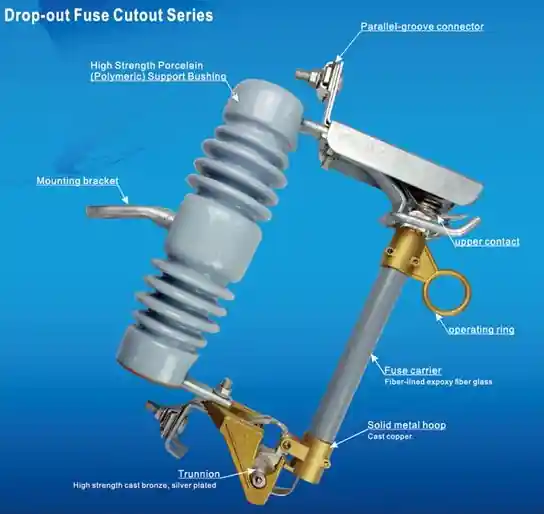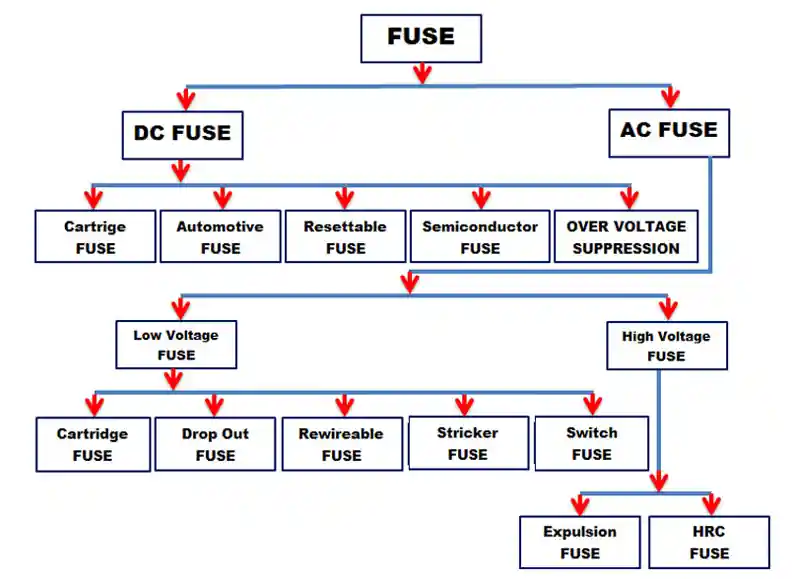When it comes to keeping high-voltage power systems safe and reliable, high voltage fuses are indispensable. Yet, their naming conventions can confuse even seasoned engineers and buyers. This guide simplifies everything—explaining how fuse names are structured, what they mean, and how to pick the perfect fuse for your project.

What Is a High Voltage Fuse?
A high voltage fuse is a protective device that stops excessive current in systems operating above 1kV. Think of it as a guardian for critical components like transformers, capacitor banks, and switchgear. By interrupting overcurrents and short circuits, these fuses prevent costly damage and dangerous failures.
📘 Want to dig deeper? Check out high voltage fuses on Wikipedia.
Common High Voltage Fuse Names and Standards
High voltage fuse names aren’t random—they follow manufacturer codes or international standards. Here’s a breakdown of some popular examples:
| Fuse Name | Description | Voltage Rating | Standard |
|---|---|---|---|
| XRNT-12 | Indoor fuse for 12kV transformers | 12kV | GB, IEC |
| RW5-35 | Outdoor drop-out fuse | 35kV | IEC 60282 |
| SIBA 3001010.XX | German standard fuse link | 24-36kV | DIN |
| CP Fuse Link | Current limiting fuse | 7.2kV to 40.5kV | ANSI, IEC |
| EATON HMHV | Eaton high-voltage fuse module | 15kV | IEEE C37 |
Each name packs essential info:
- Voltage Level: E.g., 12kV or 35kV.
- Application: Transformer, capacitor, or motor protection.
- Mounting Type: Indoor, outdoor, drop-out, or cartridge.
These details let you quickly pinpoint the right fuse for your needs.

Decoding High Voltage Fuse Name Prefixes
Fuse names often start with prefixes that reveal their purpose. Here’s what they mean:
- XRNT: Indoor transformer fuse (common in China).
- RW: Outdoor drop-out fuse.
- HH: High-breaking capacity (e.g., HHB or HHV).
- CP: Current limiting fuse (meets IEC or ANSI standards).
Mastering these prefixes makes sorting through fuse options a breeze.
Applications of High Voltage Fuses
Different fuses shine in different roles:
- Transformer Protection: XRNT-12 fuses guard 11kV or 33kV transformers.
- Capacitor Banks: CP and HMHV fuses shield capacitors from overcurrent.
- Motor Circuits: HH series fuses tackle high inrush currents.
- Switchgear Panels: Modern metal-clad switchgear often integrates fuse modules.
Matching the fuse to the application keeps your equipment safe and running smoothly.
How to Choose the Right High Voltage Fuse
Picking the right fuse goes beyond voltage matching. Here’s your checklist:
- Rated Voltage: Align it with your system (e.g., 12kV, 24kV).
- Breaking Capacity: Ensure it can handle the max fault current.
- Time-Current Curve: Go fast-acting for sensitive gear, slow-acting for motors.
- Compatibility: Confirm it fits your holder and meets size specs.
Pro Tip: Opt for manufacturers with IEC/ANSI certification and customization options for the best fit.
Top High Voltage Fuse Manufacturers
Need a reliable supplier? Check out these trusted names:
- PINEELE: China-based, offering XRNT, RW, and CP series.
- Eaton: ANSI and IEEE-certified fuses for global use.
- SIBA: German precision and DIN compliance.
- Cooper Power Systems: Experts in overhead fuses.
- ABB: Industrial-grade solutions for medium-voltage systems.
Why Choose PINEELE High Voltage Fuses?
PINEELE stands out with:
- Versatility: Covers everything from XRNT-12 to RW5-35.
- Compliance: Meets IEC, GB, and ANSI standards.
- Support: Factory-direct OEM/ODM and fast delivery.
- Transparency: Full test reports and datasheets provided.
🔗 Discover PINEELE’s high voltage fuses.
Frequently Asked Questions (FAQs)
A: XRNT is a Chinese standard for indoor high-voltage fuses, often used in 12kV transformer setups.
A: Not quite. While IEC and ANSI standards are common, names vary by manufacturer. Always check the datasheet.
A: Nope. RW5-35 is built for outdoor use, while XRNT-12 is indoor-only.